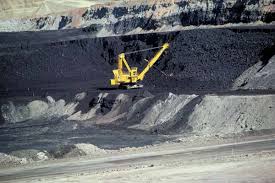Business and Economy
Canada’s mining sector braces for another challenging year in 2015
MONTREAL — Canada’s mining sector is bracing for another challenging year in 2015 as slower growth in China is expected to continue to dampen selling prices for many metals.
Iron ore suffered the biggest drop in the past year, losing nearly half its value to reach the lowest price in more than five years. Some expect the price could fall further — perhaps to US$60 per tonne — on increased supply from Australia and Brazil by giants like Rio Tinto and BHP Billiton, outpaces demand.
Coal, silver, potash, copper and lead prices also weakened in the past year.
Not all metals and minerals suffered. Nickel was the big winner, with prices rising 17 per cent following Indonesia’s ban on exports. Other gainers were uranium, aluminum, zinc and diamonds.
Although mining is in a multi-year global slump, prices are significantly higher than they were a decade ago, said Pierre Gratton, president of the Mining Association of Canada.
“It’s a cyclical industry and we have to weather this,” he said in an interview.
Gratton said mining companies are very focused on reducing costs and will benefit from both the weakened Canadian dollar and dramatically lower energy prices.
“They’ve seen this a million times. They will weather this and prepare for the next upswing and when (it) comes I think the general view is it is going to be pretty significant.”
China consumes almost half of the world’s base metals. Even though its pace of growth has slipped, one of the world’s largest economy and other emerging countries, such as India, will need more metal to make consumer goods and build housing to accommodate a growing middle class, and the shift in population to urban from rural.
Just increasing the rate of car ownership will propel demand for iron, aluminum and other metals.
In the meantime, industry observers say mining companies are cautious about new investments until they get a better sense of when conditions will improve.
“We are seeing people looking further out and more optimistic in the 2016-2017 time frame,” said Jackie Przybylowski of Desjardins Capital Markets. “People are positioning themselves now, to take advantage of those longer term positive markets and just sort of hanging in there until then.”
BMO Capital Markets forecasts its commodities price index for metals and minerals will decrease nine per cent this year to its lowest level since 2009, but then increase about four per cent in 2015.
The bank expects precious metal prices will face further downward pressure from the rising U.S. dollar. Copper should decrease further but industrial metals like aluminum and zinc which rallied in 2014 should “consolidate” those gains in 2015.
Gold remains the top metal export in Canada even though its price has slipped from a 2011 peak of US$1,921 to about US$1,270 today, down about 10 per cent in the past year. Analysts expect the price will remain relatively stable over the next two years.
Copper prices have been falling, but global supply will slip after Zambia’s tax change to increase royalties prompted Barrick Gold Corp. to halt operations at its Lumwana copper and gold mine. Other global miners have cancelled projects in Africa’s second-largest copper producing country.
Meanwhile, the outlook for diamonds sparkles, prompting new investments in the Northwest Territories and Quebec.
Rio Tinto, which holds a 60 per cent stake in Diavik near Yellowknife, says it will spend US$350 million over four years to develop the mine, with production from the expansion expected to start in late 2018.
Stornoway Diamond Corp. plans to develop Quebec’s first diamond mine, a $1-billion project that will see production begin in 2017.
Royal Nickel is also working on its Dumont nickel project, in northwestern Quebec, that it says will become one of Canada’s largest base metal mines.
“When the mining cycle turns — and it will turn — we have one of the few projects that can deliver a substantial amount of value to the market over the next few decades,” said CEO Mark Selby.
Not all areas of the country are doing so well. Quebec’s iron ore producing Labrador Trough, in the far north, is struggling as low prices have forced Cliffs Natural Resources to close its Bloom Lake mine and several exploration companies to slow their development plans.
ArcelorMittal, which invested $1.6 billion to increase its annual concentrate production capacity to 24 million tonnes, said lower prices is forcing “a structural change” for the iron ore industry to lower costs to offset the possibility of further drops.
The Labrador Trough also faces higher transportation costs to Asia, along with higher labour and energy costs than Australia’s iron region and Brazil.
“This context has forced us to accelerate our strategy and attain our real potential a lot quicker than predicted,” said Pierre Lapointe, vice-president at ArcelorMittal Mining Canada.
He said one way to “ease our pain” is to extend liquefied natural gas north, a move that would cut costs by two to five per cent.
Quebec Energy and Natural Resources Minister Pierre Arcand said that’s one of the priorities of the government as it relaunches Plan Nord, a multibillion-dollar northern development plan that was initially introduced in 2011.
He said the province is also keen to support the construction of multi-user railway and port infrastructure, and is working with the Ontario government to extend electricity to distant communities.
“(We) cannot wait until there is a mining boom and everything becomes uncontrollable,” he said of the need for development.
Other regions of Canada face differing prospects.
British Columbia’s coal regions have suffered from lower prices, but areas of the province with copper are surviving. So too has the copper and nickel producing Ontario cities of Sudbury and Timmins.
Saskatchewan has faced a tougher year because of weaker potash prices, but could do better if Japan’s nuclear plants come back on stream to support higher uranium prices.
Ontario’s Ring of Fire remains largely just a great mining potential until the required transportation infrastructure for the mineral development in northwestern Ontario is built. Ontario wants the federal government to match its $1-billion commitment to build transportation infrastructure for the mineral-rich region.
The remote region to the west of James Bay holds one of the world’s richest chromite deposits, discovered in 2007, along with nickel, copper and platinum — deposits worth an estimated $60 billion.
However the region lacks both an electrical grid and a transportation corridor and faces daunting public infrastructure costs estimated well in excess of $1 billion.
Cliffs Natural Resources Inc. withdrew last year and just last month the American company’s new CEO told the Financial Post he has “zero hope” the deposit will be developed in the next 50 years.






















